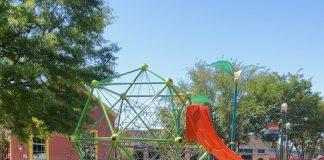Tips for Painful Breastfeeding Relief
Disclaimer :: This post is sponsored by Our Lady of Lourdes Women’s & Children’s Hospital and is written by Dr. Debbie Jurgelsky, OB-GYN.
Breastfeeding has many benefits, but there is also some pain associated with lactation. Here is some useful advice on how to manage breast pain.
Congratulations! You’ve just brought home your new baby. Now she’s hungry and you’re sore from breastfeeding. What can you do? Breastfeeding may seem daunting for a new mom, but even if you don’t know what to do, you can be sure that your baby does. So don’t give up just yet.
What’s the right amount of time to breastfeed?
Current recommendations are to feed only breast milk for the first six months, and then from month 6-12 feed your baby a  combination of breast milk and foods such as cereal, fruit and veggies for babies.
combination of breast milk and foods such as cereal, fruit and veggies for babies.
What are common causes of breast pain and what can you do to alleviate them?
Engorgement: When your breasts are too full of milk and your baby has trouble latching on, breasts can become swollen, hard and painful.
- Use a breast pump to let out milk for 2-5 minutes (no longer, or you could make it worse.)
- Use an ice pack, take a warm shower or try gentle massage until milk starts to flow.
- Take Tylenol to reduce pain.
Painful nipples: Possibly due to cracks, blisters or bruises.
- Make sure that baby is latching on correctly.
- Use a doctor-prescribed ointment.
- Try an over-the-counter ointment, such as lanolin.
- Wear breast pads between feedings to keep nipples from rubbing against fabric.
Blocked milk ducts: These can cause a painful, red lump.
- Try to breastfeed often, and make sure that the breasts fully empty during feedings.
- Try a warm shower and gentle massage to help milk flow.
Breast infections: This is a common reason why many breast-feeding women come to the ER or see their doctors. The most common infection is called “mastitis.” In addition to a fever, you may develop a hard, red and swollen area on your breast.
- You don’t need to stop breast-feeding while you have mastitis.
- Take a pain reliever like acetaminophen.
- Use a breast pump to fully empty your breast after feedings.
- Talk to your doctor to see if you should take an antibiotic (and make sure to find out whether you can continue feeding your baby while on the antibiotic.)
 When should I see a doctor?
When should I see a doctor?
If you have a blocked duct that doesn’t improve after three days, have a fever and signs of mastitis, blood coming from your nipples or pain that lasts for an entire breast-feeding session, check in with your OB-GYN.
For more information, or if you’re just having trouble, ask your doctor to recommend a “lactation consultant” – someone who’s specially trained to help you deal with problems and successfully breastfeed your baby. You can reach the certified lactation consultants at Women’s & Children’s during the day at (337) 521-9138 and in the evenings at (337) 521-9160.
The U.S. Department of Health and Human Services (HHS) recommends seeing your doctor right away if:
- You have a breast infection in which both breasts look affected.
- There is pus or blood in your breastmilk.
- You have red streaks near the affected area of the breast.
- Your symptoms came on severely and suddenly.
Also, be sure to discuss any medicines you take or plan to take with your doctor.

Dr. Debbie Jurgelsky is an OB-GYN with Women’s & Children’s Hospital, Acadiana’s breastfeeding education and support leader for more than 35 years. Learn more at www.Womens-Childrens.com.


















